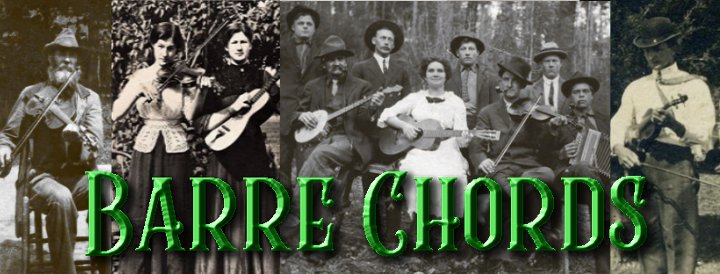
The Swiss Army Knife of Guitar Chords!
| Please Read: How to Help Our Site at No Cost to You - Some of our articles contain recommendations for products we like and vendors we personally trust. Some of those vendors may pay us a very small commission if you click on a link and buy their products. This costs you nothing at all and helps offset the costs of what we do. So if we point you to something you decide to buy later, please make certain you come back through our site and click on the link directly. Thanks. |
| This Site is a Cookie-Free Zone - Except for discussion forums that you have to expressly register for, none of our pages use cookies of any kind. Some of the vendors we link to do, but that won't affect you unless you click on a link to their pages. Your continued use of this page indicates that you agree to our policy. For details, click here. |



|
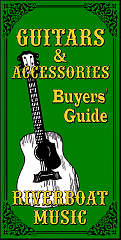
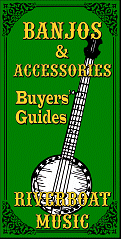
Barre Chords - The Swiss Army Knife of Guitar Chords
This is part of the "VERY Basic Guitar subset of our "How To Folk" articles. In an effort to "jump start" your enjoyment of Folk music and your ability to join in, no matter what instrument you play, we are providing some very basic notes about guitar chords.

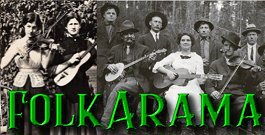 Note: - This series is part of the Folkarama page, which is dedicated to helping beginners "get into" Folk music and join Folk communities as easily as possible, with simple articles and links to resources that provide hands-on instruction in traditional acoustic instruments.
Note: - This series is part of the Folkarama page, which is dedicated to helping beginners "get into" Folk music and join Folk communities as easily as possible, with simple articles and links to resources that provide hands-on instruction in traditional acoustic instruments.
Folkarama, in turn, contains many references to more extensive articles and resources in Paul Race's CreekDontRise.com site, as well as other related pages.
Play Almost Any Chord in Any Key Without a Capo
Okay, it sounds too good to be true. Because it entails building up some left-hand strength. And, like the C chord, it becomes a barrier for many folks. But once you get ahold of the principles, you'll almost never get "thrown" again when a song leader or a chord sheet specifies a weird chord you've never played before.This article contains a lot of information, so don't feel bad about taking it a few bits at a time. Nothing is really that hard, once you spend a little time on each section.
For the barre chords we'll be discussing in this aticle, you need to lay your forefinger across all six strings, squeezing hard enough to fret most of them. Ordinarily I would say "all," but you use your other fingers, too, which takes a bit of the pressure off your forefinger and reduces the number of strings your forefinger actually has to fret fully.
You will likely need to adjust your thumb position to give your forefinger the leverage you need.
Don't feel bad if you don't take to these right away. Barre chords are a little tougher on steel-stringed acoustic guitars than they are on electric or classical guitars. But even folks who play open chords most of the time find some barre chords useful. And it helps to be able to recognize them when you're playing along on a song you don't know well yet.
Once we've shown you how they work, we'll tell you which ones you'll probably find most useful.
How Barre Chords "Work"
Most barre chords actually use chord shapes you've already learned - if you're going through our articles in sequence. But instead of playing them with your first three fingers, you play them with your index finger, ring finger, and usually your pinky.
Two common barre chord forms are shown to the right. E and A major chords are shown in their most common position. To raise each a half, step, your forefinger goes behind the first fret, and your other fingers make the chord shape.

If you slid your forefinger up another fret, you'd have F# major, which you'll probably never use, and B major, which you might.
The point is that these chord forms can be used all up and down the neck, so once you're used to them, you could technically play in any key.
Cheer Up - Most Folk, Country, and Bluegrass players use only a handful of barre chord shapes, which are based on chords you already know, and which we'll show you below. But you'll notice that most barre chords only require your forefinger to actually fret two to three strings. So while you're learning these chord shapes, you only have to make certain your forefinger is fretting the strings that would have been open if you were playing the open chords these shapes are based on.
Once you get used to placing them, your other fingers will generally have no trouble fretting the other strings. In fact, having those strings fretted will make it easier for your forefinger to fret the strings it needs to, by reducing the overall pressure.
Eight Barre Chord Shapes You'll Recognize
Other barre chords exist, but most of them are used by jazz and pop guitarists. 98% of the barre chords used by acoustic Folk, Country, and Bluegrass guitarists are based on the following chord shapes.
We don't show the "nut" in this graphic, because these chord shapes can be used anywhere on the neck.

It might be a good idea to practice all eight in several positions. For most people, starting around the third fret is easier than starting on the first fret. But work your way up and down.
Barre Chords You're Likely to Need
In one sense, I've just shown you how to play 44 different chords, by moving these chord shapes up and down the neck. But in reality, you'll seldom use some of these at all. The following section describes the barre chords you're most likely to encounter.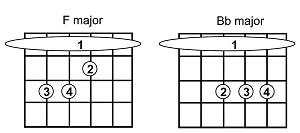 About F and Bb Barres - Remember when we showed you "cheater" F and Bb chords? This way of playing F, especially, is very useful when you're playing songs in C and you want a nice full sound when you go to F.
About F and Bb Barres - Remember when we showed you "cheater" F and Bb chords? This way of playing F, especially, is very useful when you're playing songs in C and you want a nice full sound when you go to F.
Don't feel bad if you have trouble playing Bb this way - there are other ways to play that chord, and if you stick with Folk or Folk-influenced music, you'll seldom need it anyway.
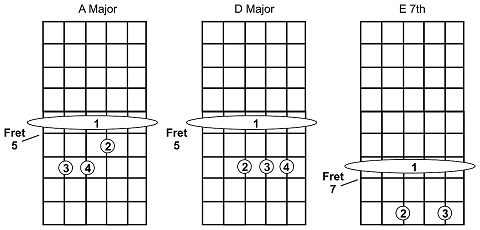 Barred A, D, and E7 - Both the E major and A major chord shapes are very popular in Rock and Roll. You can place your forefinger on the fifth fret, and play them as A and D. If you place your forefinger on the seventh fret and play the A7 shape, you have an E7.
Barred A, D, and E7 - Both the E major and A major chord shapes are very popular in Rock and Roll. You can place your forefinger on the fifth fret, and play them as A and D. If you place your forefinger on the seventh fret and play the A7 shape, you have an E7.
Hundreds of Rock songs, especially Blues-based songs like Johnny B. Goode, can be played with these three chords.
And if the song is too high or too low for your voice, you can slide all three chords up and down the neck until the pitch is comfortable for you. Moving toward the neck one fret puts you in the key of Ab. Moving toward the bridge one fret puts you in the key of Bb, and so on. Once you get good at these, you realize quickly why rock guitar players often play in keys that are nearly impossible to play with open chords.
And, once again - when you know how these chords work, it's easy to spot them, which will help you play along, even if you're playing another instrument.
Barred B Minor and F# Minor Chords - We showed you "cheater chords" for B minor and F# minor earlier. Here are the chords that most experienced acoustic guitar players use most of the time.
B minor is used a little by folks playing in G and a lot by folks playing in D.
F# minor is used a little in D and a lot in A.

Some people find the minor seventh version of these chords easier to play, and in many cases, they substitute just fine.
Barred Gm and Cm - Half a step up from the F#m and B minor chords, which are usually used in keys like D and A, are G minor and C minor. This version of G minor is especially useful, since there's no good cheater version of that chord. Occasionally you'll come across a traditional or Bluegrass song that is played in C minor, though I have no idea why. :-) This version of C minor is far better than any cheater versions you'll come across.

The Principle of the Thing
You may never find yourself using some of these chords, but the important thing is that you recognize them and you know the principles they're based on. If, for example, you know "Johnny B Goode" in A, using the 5th-fret barre chords shown above, and someone starts playing "Johnny B. Goode" in B (as Marty does in Back to the Future), you just have to slide your fingers two frets toward the bridge.Conversely, back in the 1970s, I learned one Stones song in Ab, because that was what was on the LP, then I learned later that they had tuned their instruments down a half step in the studio, to make it easier for Mick to hit the high notes. They were really playing it with A chords, and they played it in A live. Fine, if I'm in a jam and someone starts playing it in A, I just have to slide the parts I know up one fret.
Conclusion
There are many other chords and many other ways of playing the chords we've shown you so far. But if you've gone through our articles in sequence, you've already learned 99% of the chords you'll encounter within tradition-based genres, such as Folk, Bluegrass, and Country. And you'll probably be in a position to quickly figure out any others you encounter.
In the meantime, there are a dozen strumming and picking patterns worth knowing. But if you're playing mandolin or banjo, you already know what you need to know to follow most guitar players on most songs, sheet music, chord sheets or not.
I know this may sound like a tall order, but during the Folk Revival I lived through, pretty much every musician I jammed or shared a stage with could follow along on most songs with no problem. So it can be done . . . .
And you can do it.
Other Resources
Related resources include:- Meet Your Guitar - A brief introduction to the parts of the guitar and how to hold it.
- Three Magic Chords - A series of articles that get you started on basic chords you can use to play thousands of songs. Articles include:
- 3-Chord Songs in D - A list of songs you can easily play in D, using G and A7.
- What is a "Three-Chorder"? - The three-chord pattern that defines countless songs.
- More Useful Chords - "Next steps" to expand your range and enable you to play even more songs, including:
- C and C9 Chords - Once you've learned the "Three Magic Chords," the C chord will help you play thousands of 3-chord songs in G, but some folks find it cumbersome at first, so we've given you a "workaround" to use while you're getting used to it.
- It's All Relative - Am and Em - The fingerings and most common uses of guitar's easiest minor chords, Am and Em. We also sneak in Am7, Em7, and Bm7 to expand your chord vocabulary.
- A Major - the Fiddler's Friend - Expand your chord arsenal with A major and its BFF, E7.
Other resources will be listed as I get to them.
- 3-Chord Songs in G - A list of songs you can easily play in G using G, C9 (or C) and D7.
- The Circle of Fifths - a deeper discussion of the relationships among chords, something that helps musicians quickly learn or follow new songs, or even transpose them to other keys. (This is on our sister site, CreekDontRise.com)
Sister Sites
 Other sites we started to keep this site from getting too big to be useful include:
Other sites we started to keep this site from getting too big to be useful include:
- CreekDontRise.com is a repository of articles about Folk music and the instruments on which it has been traditionally played.
The "Acoustic" page includes a long list of articles including maintenance and playing tips on all sorts of traditional acoustic instruments.
 RiverboatMusic.com is a buyers' guide for acoustic and traditional instrument from a musician's point of view, focusing on the uses, reliability, and practicality of various instruments, and not just the marketing hype about the shape of the fret markers or whatever.
RiverboatMusic.com is a buyers' guide for acoustic and traditional instrument from a musician's point of view, focusing on the uses, reliability, and practicality of various instruments, and not just the marketing hype about the shape of the fret markers or whatever.
For instruments like dulcimers that have mostly small manufacturers or cheap imports, we try to tell you what to look for, irrespective of brand.
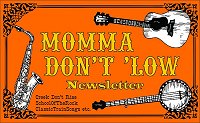 Momma Don't 'Low includes a free e-mail newsletter that discusses all of those topics above and more. We plan to include other features as time permits.
Momma Don't 'Low includes a free e-mail newsletter that discusses all of those topics above and more. We plan to include other features as time permits.
Note - If you wish to sign up for our newsletter and ask a question at the same time, please click on the Momma Don't 'Low newsletter button to learn more and to get a link to our signup form.
 PaulRaceMusic.com is the "landing page" for Paul's own musical endeavors, plus many memoirs and blogs about music and the music business.
PaulRaceMusic.com is the "landing page" for Paul's own musical endeavors, plus many memoirs and blogs about music and the music business.
 ClassicTrainSongs.com describes railroad songs that every train lover should know. Or at least know about.
ClassicTrainSongs.com describes railroad songs that every train lover should know. Or at least know about.
- SchoolOfTheRock.com has articles about Christian music, Christian music careers and performance, Christian living in general, and vintage saxophones, another of Paul's interests. This site has separate newsletters, etc., by the way - there isn't a lot of overlap with the Momma Don't 'Low(tm) newsletters.
For information about other music collections and projects, check the links at the bottom of this page.
 Whatever else you get out of our pages, I hope you come away with some great ideas for "sharing the joy."
Whatever else you get out of our pages, I hope you come away with some great ideas for "sharing the joy."
And please stay in touch!
All material, illustrations, and content of this web site is copyrighted (c) 2001, 2002, 2003, 2004, 2005, 2006,
2007, 2008, 2009, 2010, 2011, 2012, 2013, 2014, 2015, 2016, 2017, 2018, 2019, 2020, 2021, 2022, 2023 by Paul D. Race. All rights reserved.
Creek Dont' RiseTM is a participant in the Amazon Services LLC Associates Program, an affiliate advertising
program designed to provide a means for sites to earn advertising fees by advertising and linking to Amazon.com.
For questions, comments, suggestions, trouble reports, etc. about this page or this site, please contact us.
| Visit related pages and affiliated sites: | |||||
| - Music - | |||||

|
 |
 |

|

|

|

|

|

|

|

|

|

|

|

|

|

|

|
| - Trains and Hobbies - | |||||
 |

|

|  |
 |

|
| - Christmas Memories and Collectibles - | |||||
 |

|
 |

|
 |

|
| - Family Activities and Crafts - | |||||
 |

|

|

|

|

|

